The Green Knight (Movie Tie-In) Read online
PENGUIN BOOKS
THE GREEN KNIGHT
BERNARD O’DONOGHUE was born in Cullen, County Cork, Ireland, in 1945. Since 1965 he has lived in Oxford, where he teaches medieval English at Wadham College, University of Oxford. He has published five volumes of poetry, as well as books on the language of modern poetry and on medieval literature. His anthology of medieval European love poetry, The Courtly Love Tradition, was published in 1982.
PENGUIN BOOKS
An imprint of Penguin Random House LLC
penguinrandomhouse.com
This translation first published in Great Britain as
Sir Gawain and the Green Knight by Penguin Classics, an imprint of Penguin Random House Ltd, 2006
Published in Penguin Books 2007
This edition published as The Green Knight with a foreword by David Lowery in Penguin Books 2021
Translation and editorial material copyright © 2006 by Bernard O’Donoghue Foreword copyright © 2021 by David Lowery
Penguin supports copyright. Copyright fuels creativity, encourages diverse voices, promotes free speech, and creates a vibrant culture. Thank you for buying an authorized edition of this book and for complying with copyright laws by not reproducing, scanning, or distributing any part of it in any form without permission. You are supporting writers and allowing Penguin to continue to publish books for every reader.
LIBRARY OF CONGRESS CATALOGING-IN-PUBLICATION DATA
Names: O’Donoghue, Bernard, translator, writer of introduction.
Title: The Green Knight / translated with an introduction and notes by Bernard O’Donoghue.
Other titles: Sir Gawain and the Green Knight. English.
Description: New York : Penguin Books, 2020. | This translation first published in Great Britain as Sir Gawain and the Green Knight by Penguin Books UK, an imprint of Penguin Random House Ltd, 2006. Published in Penguin Books US, 2007. |
Includes bibliographical references. |
Identifiers: LCCN 2020013627 | ISBN 9780143136231 (paperback)
Subjects: LCSH: Gawain (Legendary character)—Romances. | Knights and knighthood—Poetry.
Classification: LCC PR2065.G3 A356 2020 | DDC 821/.1—dc23
LC record available at https://lccn.loc.gov/2020013627
Ebook ISBN 9780593511213
Key art on cover used by permission of A24 Films LLC
a_prh_5.7.0_c0_r0
Contents
Foreword by David Lowery
Acknowledgements
Introduction
Further Residing
A Note on the Translation
A Note on the Text
THE GREEN KNIGHT
Notes
Appendix: Original text of lines 1998–2024 93
Foreword to Sir Gawain and the Green Knight
By filmmaker David Lowery, writer and director of The Green Knight
They’re tales I’ve heard, songs that have been sung to me. I write them down and—don’t tell anyone this—when I see room for improvements: I make them.
What was I thinking when I wrote this?
I knew what I was getting myself into when I wrote that line, and at one point even omitted it from the screenplay for fear that it was simply too brazen. But some brew of hubris and humor compelled me to restore it, and now it’s there, in the final cut, an hour and change into the movie; a permanent reminder to myself that, when adapting a work like the one you now hold in your hands, improvement is simply not possible. The best one can hope for is a glimmer of a reflection of the original that, in the best of cases, might drive readers back to the source to discover everything you merely scratched the surface of.
There is a precedent for this, as scratching the surface is all I managed to do when I first read Sir Gawain and the Green Knight during my freshman year of college. We came to it at the end of a survey of early Western classics that began with Homer and continued on into Chaucer and Beowulf. By the time I cracked open Sir Gawain, I was all literatured-out, and tended to it with the bleary-eyed glaze familiar to first-year English majors the world over. Of the actual language and much of the plot, little stuck, but something stuck, and simmered, and I don’t think it was merely the grisly spectacle of a talking severed head.
I think what hooked me, even before I knew I was hooked, was this chivalric concept of honor—the inherent valor of something as archaic and arbitrary as, say, a beheading game. The stakes of the adventure begat by this game were as bewildering to me as they were beguiling: that Sir Gawain would willingly hold himself to the terms set by this mystical knight, that he might spend an entire year waiting to embark upon an adventure that could only end in death, implied an entirely different standard by which to measure a quest (and, indeed, a life) than a traditional hero’s journey might prescribe.
So, when I randomly decided in 2018 that I wanted to make a medieval adventure film, this poem presented itself as a ready-made option. I eagerly began to reread the original text, and indeed grew so excited at its potential that I began to write the screenplay before I’d finished reading. This may have been a mistake; when you watch the finished film, you will see evidence of my very linear and rather literal journey through a text I did not thoroughly comprehend. Sir Gawain and the Green Knight is a relatively short work, but its brevity belies a thematic density that cannot be plumbed in one semester of college, or in the process of an adaptation, or in the production of a film. There is, to put it mildly, a whole lot going on here.
Indeed, it is one of those works about which I wonder whether the depth of interpretation exceeded its unknown author’s intent. When I make a film, I try to enrich it with thematic subtexts; I also know that there will be accidental allusions, little subconscious repositories of meaning that more astute viewers will pick up on, that are as unintentional as they are undeniable; and I know too that there are those projections, derived from the very slightest contextual evidence, that are so beyond my intentions that all I can do is shake my head at them—but who am I to argue with anyone who takes the time to read that deeply into something I’ve made?
And what happens when this process goes on for over six centuries? What effect does time have on interpretation? Was the vigor of Lord Bertilak’s hunt truly meant as a castigation of courtly mores? Was Morgana Le Fey really intended to be the heroine of the tale? Is the color green a symbol of life or a forebearer of evil? Was the knight actually green or was that an error in translation? The truth, I believe, is that, like all great works, this poem would not have endured so long were it not both rich with potential and also intrinsically solvent. You need the latter to get to the former. Even if a reader gets lost in the labyrinth of scholarly interpretation, she need only follow those threads back to find a source that is sound and resolute.
If you are about to read the poem for the first time, consider this a trial run. Things to expect: the poem feels very modern. Archaic concepts of honor aside, storytelling tropes have not changed much since the 1400s. It is also very witty and surprisingly—to put it in knightly terms—lascivious. Should the text cast its spell over you, consider exploring other translations. Weigh them against one another: see how the classic Tolkien edition compares to the modern vernacular of Armitage’s, and how Weston’s falls in between. Explore the exegeses that exist online (for starters, I recommend “Feminine Knots and the Other Sir Gawain and the Green Knight,” by Geraldine Heng, as a window into the manner of interpretations that await you). Does the poem strike you as a model of early feminist literature? If it doesn’t, know that it can.
This is advice I wish I’d given myself before embarking on my own journey. I arrive now at the end of this journey with a finished film that I’ll happily admit cannot do justice to the well from which it’s drawn. This may be a poem that resists adaptation, and yet I find myself now with a perverse, pathological desire to try again. Those hooks that were first sunk into me nearly twenty years ago have not been pulled loose by making my own movie. I imagine a not-unhappy life spent obsessively adapting it, again and again, each refined iteration illuminating a different aspect of the poem, offering some perspective on the whys and hows of its resonance—and none ever coming close to improving upon it.
Acknowledgements
I am very grateful to the staff of the Bodleian Library in Oxford and of the British Library. I first heard of the poem from my sister Eileen who pondered doing an M.A. on it at University College Cork in 1961. I first studied Sir Gawain with Christopher Ball and Nick Havely at Lincoln College, Oxford in the 1960s, and benefited greatly from the learning and humanity of them both. Since then I have learned most from many generations of students at Magdalen and Wadham Colleges, Oxford. They have assured me of the poem’s enduring appeal. My version was scrutinized to its advantage by my wife, Heather, my daughter, Josie, and my incomparable copy-editor, Louisa Sladen. Above all this volume has been improved by the extraordinarily perceptive and logically alert reading by Hilary Laurie of Penguin Classics.
Introduction
It has often been said that Sir Gawain and the Green Knight (c. 1380) is one of the two great long poems in Middle English, the other being Geoffrey Chaucer’s Troilus and Criseyde (c. 1385). Yet the experience of the two poems in the history of English literature could hardly be more different. Ever since his own writing lifetime in the last third of the fourteenth century, Chaucer has been a major, documented presence
in that history. Gawain survived by chance, when many anonymous poems of the same kind did not, and was hardly mentioned – or read – until the nineteenth century when it was first printed. Yet its appeal for a modern readership is unfailing. The poem’s voice, like the narrator’s voice in Miguel Cervantes’s Don Quixote (1605, 1615), is immediately recognizable to us: ironic, commonsensical and realistic.
How can such terms apply to a marginal poem by an unknown poet in Middle English, written in a language which is a great deal less familiar to us than Chaucer’s? In many passages of the poem it is not an exaggeration to say that its language sounds wholly foreign to modern English speakers. For this reason, a readable modern English translation (and there are several of them already) is essential if we are to encounter the ironic common sense of the original poem. This is a pity, it must be conceded at once, because the graphic and fluent alliterative language of the original is one of its greatest strengths. For that reason I have put in an appendix here – one of the most admired passages in the poem, with an analysis of the form of the original language.
THE MANUSCRIPT
The poem survives in a single manuscript, now held in the British Library, which has been dated to around 1400, the year of Chaucer’s death. It is a small, unprepossessing manuscript book, written in a clear hand, in a language which is hard to place exactly, but which has usually been localized somewhere in the north-west English Midlands, on the borders of Staffordshire, Cheshire and Derbyshire. There are three other poems in the manuscript, in broadly the same language or dialect, and resembling Gawain in form to varying degrees. They are all much more evangelically Christian than Gawain, which is to say religious to an extent typical of many medieval Arthurian romances (some of which of course are very religious indeed). Of the other three poems, the most celebrated is the poetic elegy Pearl, the story of a dream-encounter between a narrating ‘jeweller’ and his lost pearl, which symbolizes a daughter who died at the age of two. The other two poems are Bible stories, also told in the brilliantly graphic language of the manuscript: Patience, the story of Jonah, in the whale and elsewhere, and Cleanness (which used to be called Purity, for alliterative classification with the other two), which is made up of versions of three biblical narratives. The most successful attempts to find common thematic elements have suggested that the poems are all concerned, more or less, with acceptance of the will of God by a protagonist who is initially resistant to it. All four poems have usually been taken as the work of a single poet, the ‘Pearl’-poet or the ‘Gawain’-poet, but there is no evidence for authorship, despite a number of attempts to find an author over the past fifty years. The strongest case for single authorship rests on a common dialect and a shared formal brilliance of language, far beyond the reach of most surviving contemporary poems. A fifth poem, not in the manuscript, is sometimes added to this putative corpus, St Erkenwald, written in the same dialect and about the miracles attending the exhumation of a Roman saint in London in the course of the building of St Paul’s Cathedral.
THE POEM’S PLACE OF ORIGIN
It is always hard to say exactly where a poem like Gawain, from an outlying area of England and without a known date or author, comes from. In this case, there is clear evidence (in the way of textual corruption) that the dialect of the scribe is not exactly the same as the poet’s. On the other hand, remarkably plausible efforts have been made to identify precisely two of the three central locales in the poem, the Green Chapel and Bertilak’s castle. In particular, the work by R. W. V. Elliott in localizing the castle in the area around Leek in Staffordshire is enormously interesting.1
THE ATTRACTIONS OF GAWAIN
Whatever claims can be made for the other poems in the manuscript – and Pearl especially has always had enthusiastic advocates – it is Sir Gawain and the Green Knight that makes this group of poems a documentary survival of the first importance. So, while the likelihood that the unknown author of this brilliant romance was also the writer of a group of accomplished poetic narratives on biblical themes is highly significant, I will not discuss those other poems in detail. In Gawain the hero undergoes a set of experiences which, despite an incredibility acceptable in romance (he encounters a green man who can survive decapitation), have a remarkable psychological familiarity for us. The poem’s modernity has been repeatedly acknowledged and reproduced. The story has frequently been retold for children; there is one remarkably effective film version (and one not so effective); there is a related novel The Green Knight by Iris Murdoch; and there is a superb opera by Harrison Birtwhistle to a libretto by David Harsent.2
The story is well known so it can be told briefly. One New Year’s Day, a day particularly devoted to festive celebration in late-medieval England, Arthur and the company of the Round Table are celebrating the season at Camelot when a huge, green knight – ‘you’d think that he was some kind of half-giant’ (l. 140) – rides into the hall on a green horse. He wants to make a deal: he will have his head cut off here and now with the axe he is carrying, on condition that his decapitator will come to his domicile, his ‘Green Chapel’, to have his head cut off in return in a year’s time. Gawain takes on his challenge, and the Green Knight rides off, gruesomely holding his speaking head. At the end of the year Gawain sets off to keep the agreement, with no very clear idea where he is going, travelling on a northerly route through some familiar real places set in the romance environment. He spends the next Christmas period at a wonderful northern castle, where for three days the beautiful wife of the lord of the castle attempts to seduce him. Finally, he is directed to the Green Chapel, where he receives his fate at the hands of the Green Knight, and returns to Camelot to file his report, a sadder and wiser man.
Why is it so appealing, this story of Gawain, ‘Mary’s knight’, who has taken a vow of chastity and who bears an image of the Blessed Virgin inside his shield, but makes an improbable pact of mutual decapitation – mutually assured destruction, it would seem? The rationale offered at the end – that the whole thing was conjured up by Arthur’s malevolent half-sister Morgan Le Fay to scare his queen, Guinevere, her traditional enemy, to death – is flimsy in the extreme and, like the moral of many medieval poems, does not seem to meet the case. In several ways, the beauty is in the detail. The Vivaldi-like sequence of the seasons at the start of the second of the poem’s four sections, before Gawain sets off to keep his bargain, is incomparably evoked, from the ‘crabbed Lent’ to the warm showers that make the birds hasten to build ‘for solace of the soft summer’, to the hardening harvest whose:
. . . dryness makes the dust swirl around
and fling up high off the face of the earth. (ll. 523–4)
On his winter northward journey Gawain sleeps in his iron armour, nearly slain by the sleet, where the birds pipe piteously for pain of the cold. When he sees the castle that he thinks will be his salvation, it looks as if it is ‘cut out of paper’, like the French castles that illustrate fifteenth-century Books of Hours like that of the Duc de Berry (whose January miniature features a particularly Gawain-like New Year’s feast). Perhaps as memorable and striking as anything for the blood-sickened reader in the twenty-first century is the panic of the wild animals as the hunt attacks them: ‘They screamed and they bled and they died on the hills’ (l. 1163).
But the distinction of the poem is far from confined to the observed minutiae. The writer’s overall grasp of the narrative shows great imaginative control. Three pre-existing stories are woven together, as far as we know for the first time: the decapitation agreement; a familiar temptation scene in which a knight is amorously tempted by the wife of his host; and an ‘exchange of winnings’ in which two characters agree to exchange what they gain at the end of the day (or the ends of three consecutive days here). To link these separate stories together effectively would be impressive in itself; but in Gawain this linking is done with a clear, sustained purpose, to ask a question about romance and its often uncomplicated assumptions. The poem seems to ask (and the poem’s best critic, John Burrow,3 says the same kind of generically searching questions are asked by this writer’s poetic contemporaries in the age of Richard II – Chaucer, Gower and Langland): what happens if the perfect knight, the hero of romance, has divided loyalties? He has to show perfect Christian chivalry, but also to be perfectly courteous to ladies; he has to be faithful to his word, but also to be uncompromising in action. How does Gawain square his necessity to be chaste with a courteous response to his temptress? How, at the end of each day, can he exchange the kisses he wins from her for her husband’s winnings at hunting? And how above all can he, with his human, bodily frailty, face having his head cut off in exchange for the Green Knight’s?

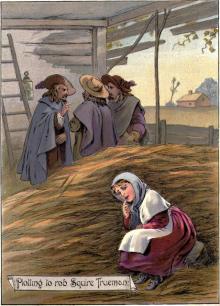 Goody Two-Shoes
Goody Two-Shoes The Pearl Box
The Pearl Box And when you gone...
And when you gone...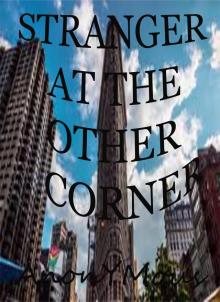 Stranger At The Other Corner
Stranger At The Other Corner My Young Days
My Young Days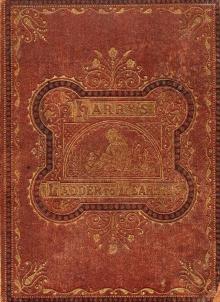 Harry's Ladder to Learning
Harry's Ladder to Learning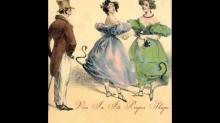 Vice in its Proper Shape
Vice in its Proper Shape_preview.jpg) Promise (the curse)
Promise (the curse)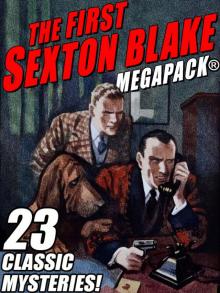 The First Sexton Blake
The First Sexton Blake Golden Moments
Golden Moments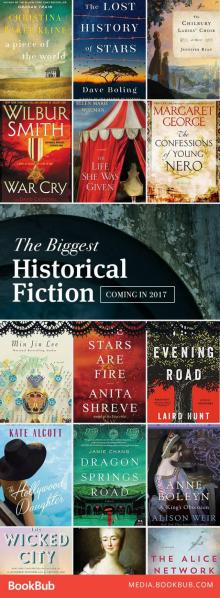 Hildebrand; or, The Days of Queen Elizabeth, An Historic Romance, Vol. 2 of 3
Hildebrand; or, The Days of Queen Elizabeth, An Historic Romance, Vol. 2 of 3 The Ice Queen
The Ice Queen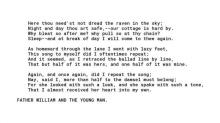 Phebe, the Blackberry Girl
Phebe, the Blackberry Girl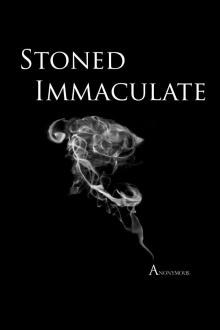 Stoned Immaculate
Stoned Immaculate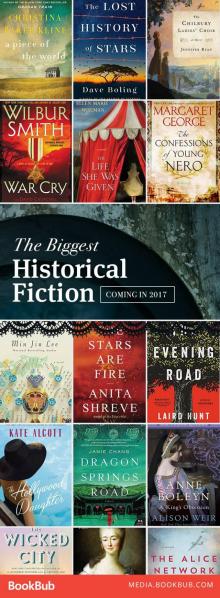 Hildebrand; or, The Days of Queen Elizabeth, An Historic Romance, Vol. 3 of 3
Hildebrand; or, The Days of Queen Elizabeth, An Historic Romance, Vol. 3 of 3 The Wonder of War on Land
The Wonder of War on Land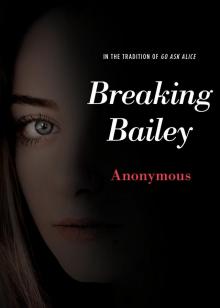 Breaking Bailey
Breaking Bailey The Little Girl Who Was Taught by Experience
The Little Girl Who Was Taught by Experience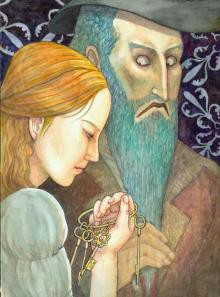 The Popular Story of Blue Beard
The Popular Story of Blue Beard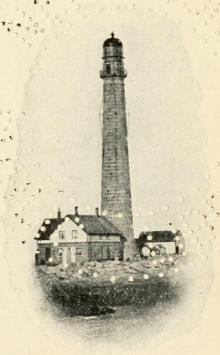 The Life Savers: A story of the United States life-saving service
The Life Savers: A story of the United States life-saving service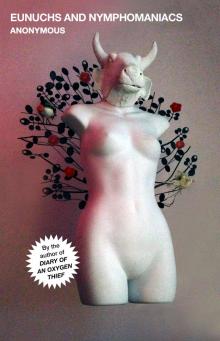 Eunuchs and Nymphomaniacs
Eunuchs and Nymphomaniacs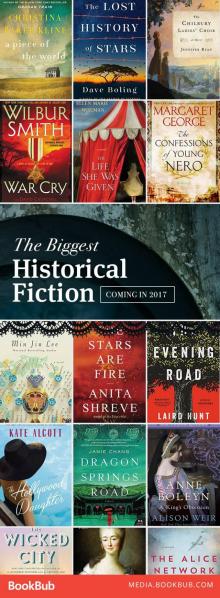 Hildebrand; or, The Days of Queen Elizabeth, An Historic Romance, Vol. 1 of 3
Hildebrand; or, The Days of Queen Elizabeth, An Historic Romance, Vol. 1 of 3 Kitty's Picnic, and Other Stories
Kitty's Picnic, and Other Stories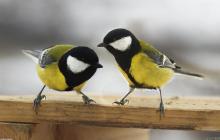 Two Yellow-Birds
Two Yellow-Birds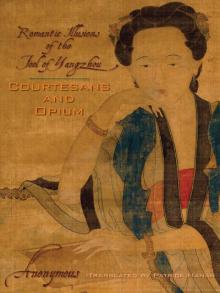 Courtesans and Opium
Courtesans and Opium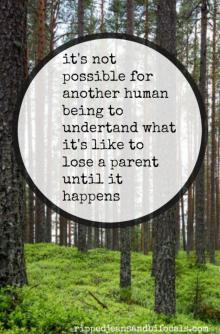 The Emigrant's Lost Son; or, Life Alone in the Forest
The Emigrant's Lost Son; or, Life Alone in the Forest Toots and His Friends
Toots and His Friends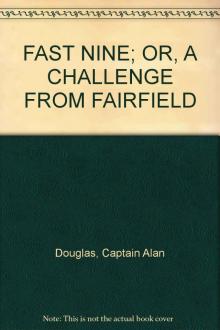 Fast Nine; or, A Challenge from Fairfield
Fast Nine; or, A Challenge from Fairfield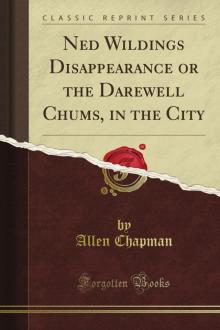 Ned Wilding's Disappearance; or, The Darewell Chums in the City
Ned Wilding's Disappearance; or, The Darewell Chums in the City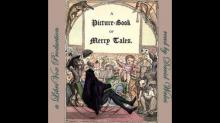 A Picture-book of Merry Tales
A Picture-book of Merry Tales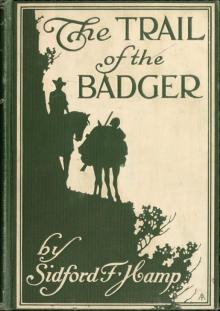 The Trail of The Badger: A Story of the Colorado Border Thirty Years Ago
The Trail of The Badger: A Story of the Colorado Border Thirty Years Ago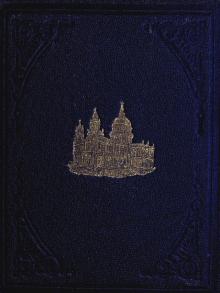 Peter Parley's Visit to London, During the Coronation of Queen Victoria
Peter Parley's Visit to London, During the Coronation of Queen Victoria The Rainbow, After the Thunder-Storm
The Rainbow, After the Thunder-Storm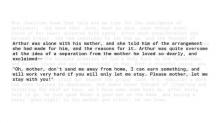 Arthur Hamilton, and His Dog
Arthur Hamilton, and His Dog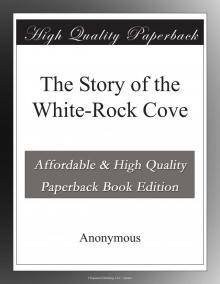 The Story of the White-Rock Cove
The Story of the White-Rock Cove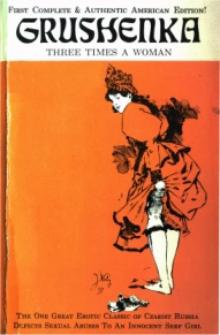 Grushenka. Three Times a Woman
Grushenka. Three Times a Woman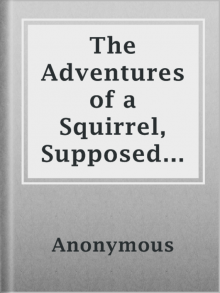 Adventures of a Squirrel, Supposed to be Related by Himself
Adventures of a Squirrel, Supposed to be Related by Himself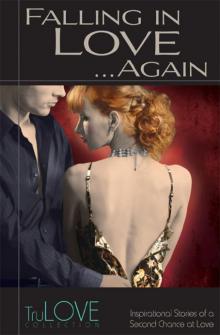 Falling in Love...Again
Falling in Love...Again The Colossal Camera Calamity
The Colossal Camera Calamity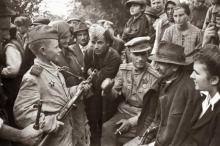 Child of the Regiment
Child of the Regiment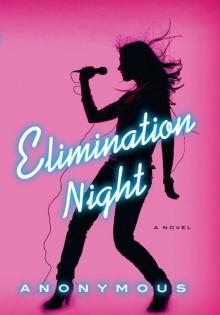 Elimination Night
Elimination Night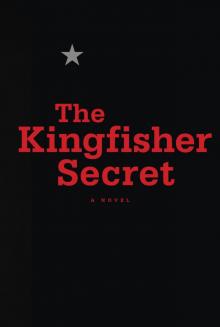 The Kingfisher Secret
The Kingfisher Secret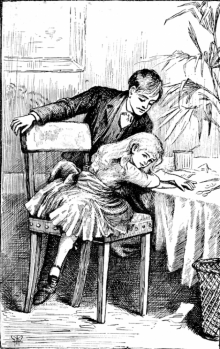 Left to Ourselves; or, John Headley's Promise.
Left to Ourselves; or, John Headley's Promise.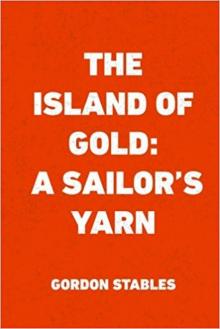 The Island of Gold: A Sailor's Yarn
The Island of Gold: A Sailor's Yarn Adventures of Bobby Orde
Adventures of Bobby Orde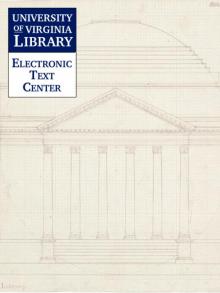 Twain, Mark: Selected Obituaries
Twain, Mark: Selected Obituaries When Love Goes Bad
When Love Goes Bad The Incest Diary
The Incest Diary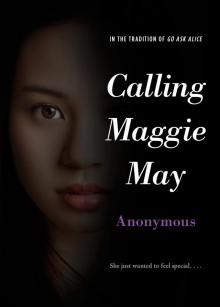 Calling Maggie May
Calling Maggie May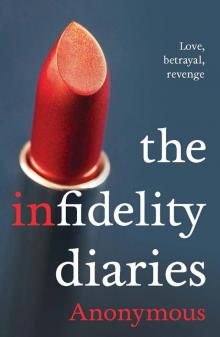 The Infidelity Diaries
The Infidelity Diaries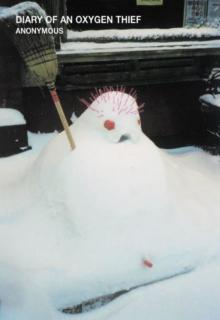 Diary of an Oxygen Thief (The Oxygen Thief Diaries)
Diary of an Oxygen Thief (The Oxygen Thief Diaries)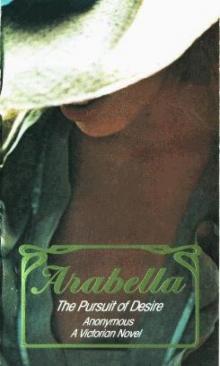 ARABELLA
ARABELLA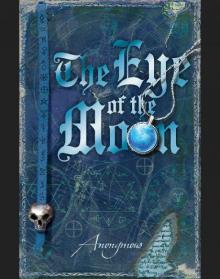 The Eye of the Moon
The Eye of the Moon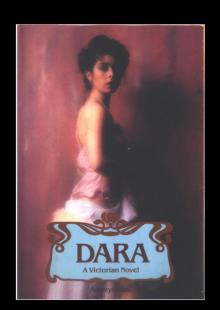 Dara
Dara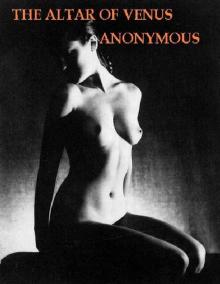 THE ALTAR OF VENUS: The Making of a Victorian Rake
THE ALTAR OF VENUS: The Making of a Victorian Rake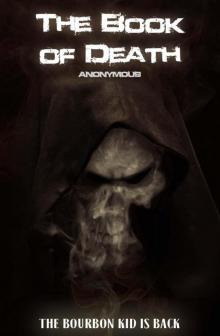 The Book of Death
The Book of Death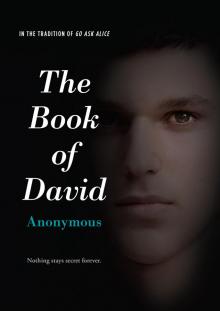 The Book of David
The Book of David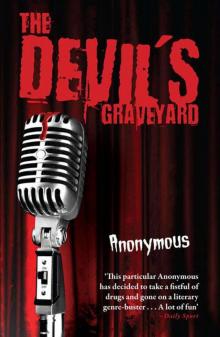 The Devil's Graveyard
The Devil's Graveyard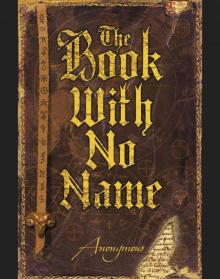 The Book With No Name
The Book With No Name I Am A Lesbian
I Am A Lesbian Njal's Saga
Njal's Saga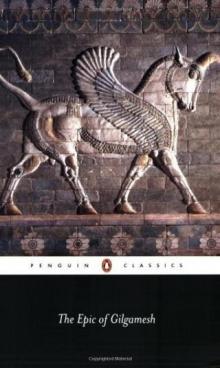 The Epic of Gilgamesh
The Epic of Gilgamesh Darling
Darling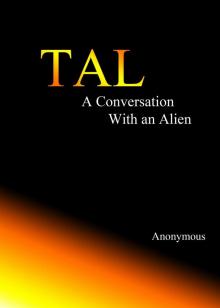 Tal, a conversation with an alien
Tal, a conversation with an alien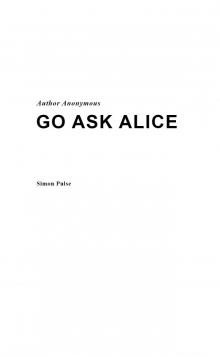 Go Ask Alice
Go Ask Alice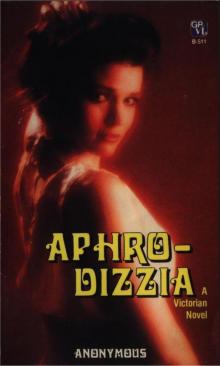 Aphrodizzia
Aphrodizzia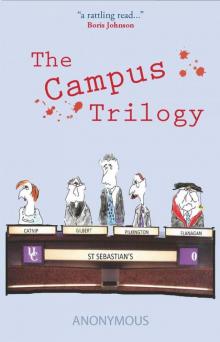 The Campus Trilogy
The Campus Trilogy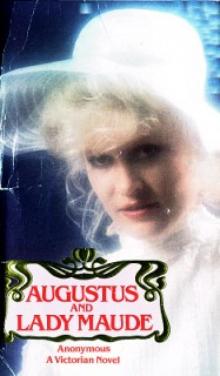 Augustus and Lady Maude
Augustus and Lady Maude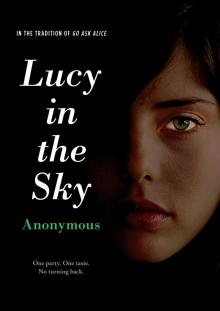 Lucy in the Sky
Lucy in the Sky Sight Unseen
Sight Unseen Pleasures and Follies
Pleasures and Follies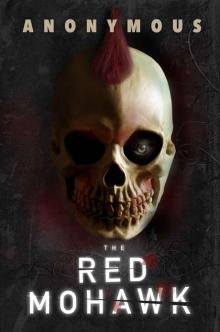 The Red Mohawk
The Red Mohawk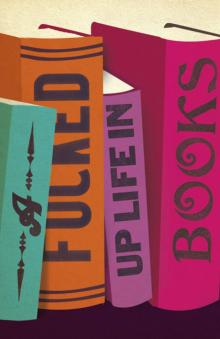 A Fucked Up Life in Books
A Fucked Up Life in Books Chameleon On a Kaleidoscope (The Oxygen Thief Diaries)
Chameleon On a Kaleidoscope (The Oxygen Thief Diaries)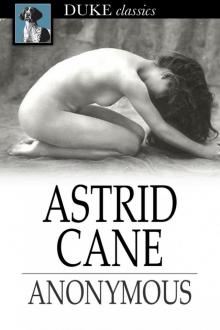 Astrid Cane
Astrid Cane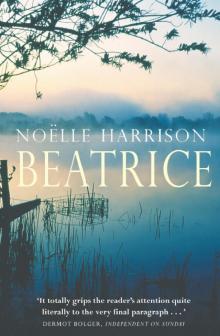 BEATRICE
BEATRICE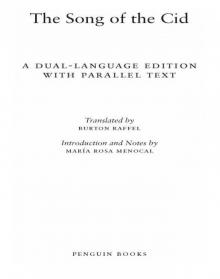 The Song of the Cid
The Song of the Cid